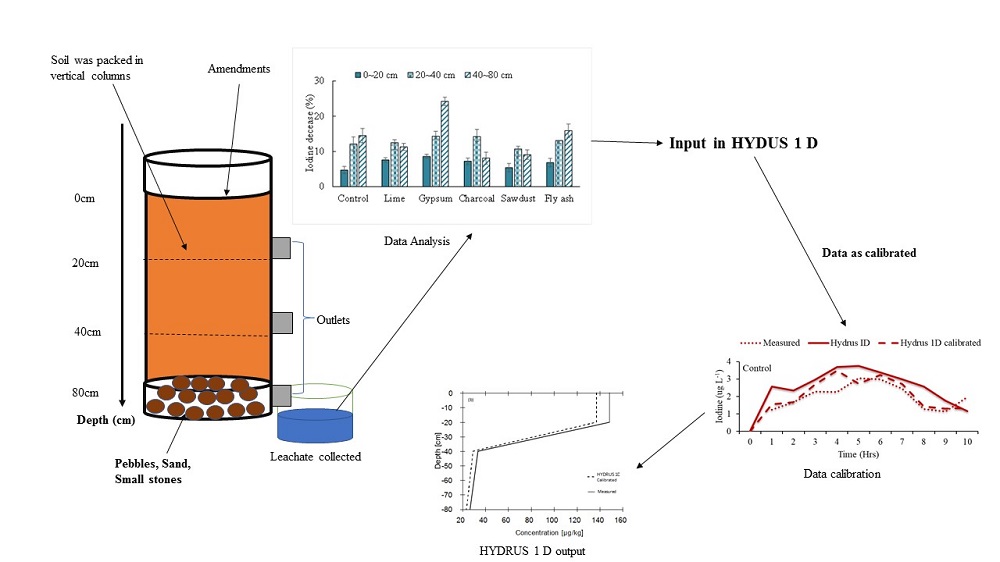This study investigated the ability of a HYDRUS 1D model for predicting the vertical distribution of potassium iodine (200 ppm) in soil columns after amendment with five different common remediation materials (gypsum, lime, fly ash, charcoal and sawdust) at a rate of 2.5% (w/w), relative to an unamended control soil. Results shows that relative to the unamended soil, iodine leaching was decreased by all amendments but that the magnitude of the decreases varied with the soil amendment applied. Iodine content was highest in the upper layer of the soil columns and decreased progressively with soil depth. The model was evaluated via comparison of the model simulated values with measured values from the soil column studies. The results showed that the HYDRUS 1D model efficiency was near to 1, indicating that the stimulated results were near to the measured values. Therefore, this study showed that iodine leaching through a soil could be ascertained well using a HYDRUS 1D model. The model over predicted iodine leaching, resulting to a weak correspondence between the simulated and the measured results for iodine leaching. This suggests that the HYDRUS-1D model does not explain accurately different organic and inorganic amended soil and the preferential flow that occurs in these columns. This may be due to the fact that Freundlich isotherm, which is part of the transport equations, does not sufficiently describe the mechanism of iodine adsorption onto the soil particles. This study would help to select amendments for an effective management strategy to reduce exogenous iodine losses from agro-ecosystems. This would also improve understanding of iodine transport in soil profile.

